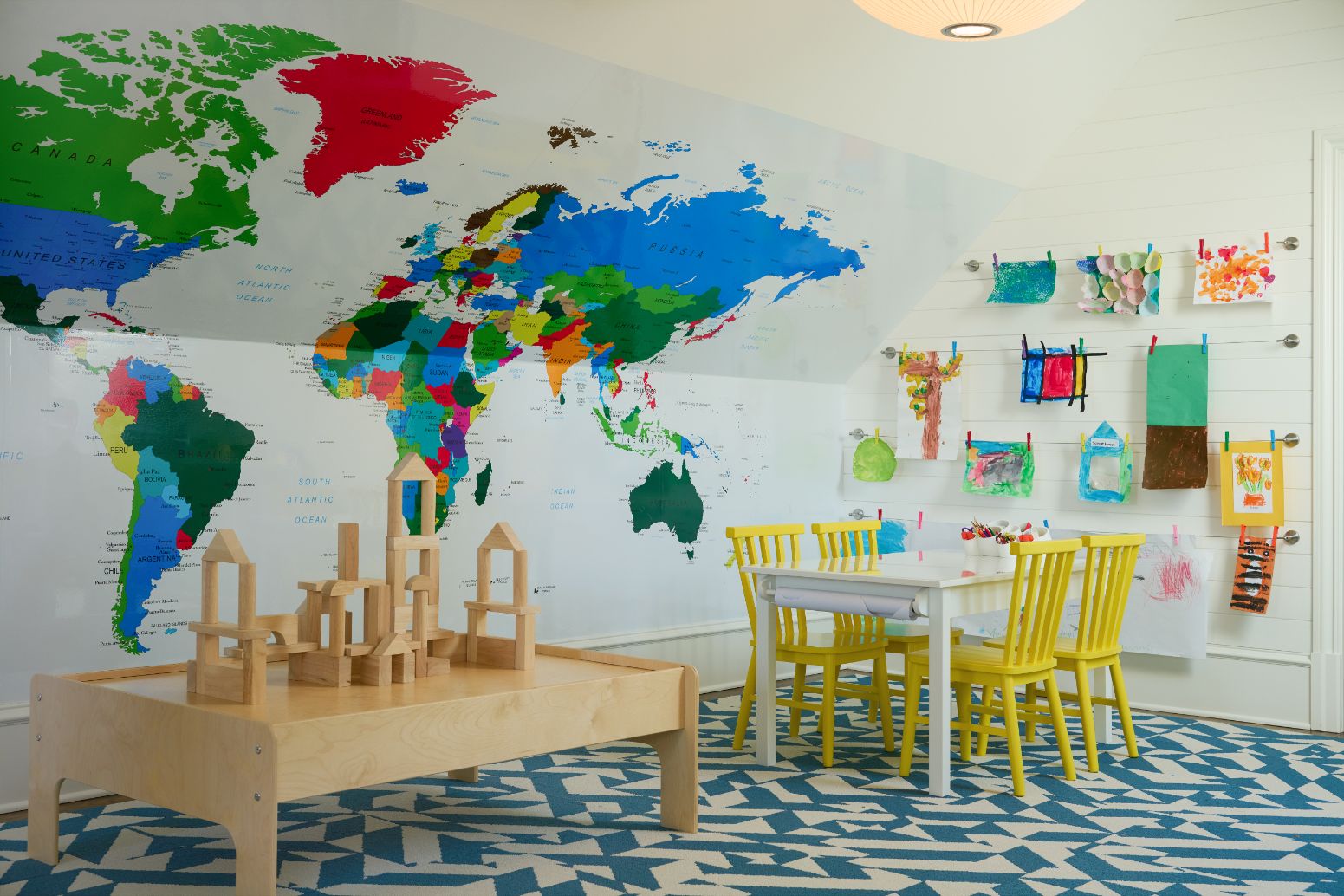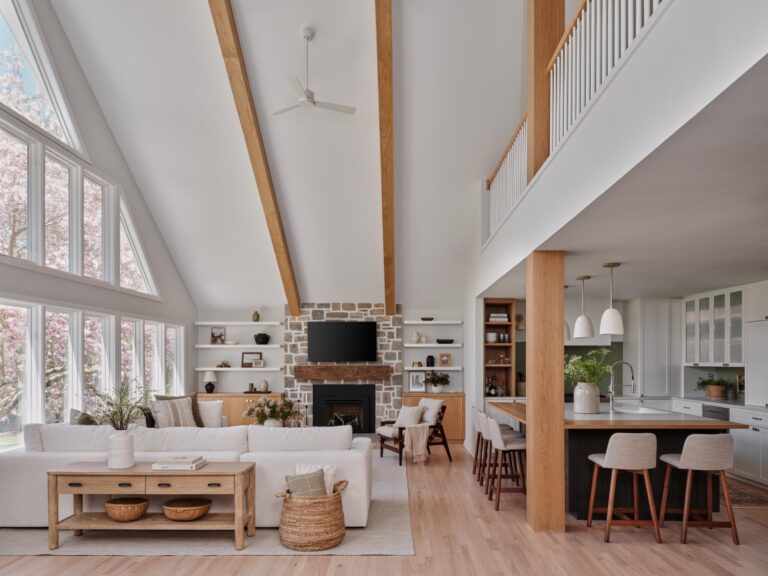While educational experts can debate about how much homework is appropriate for students throughout their schooling, most educators agree that some level of homework is necessary to create that home/school continuum and ensure academic success. “It allows children to display mastery of what they’ve learned throughout the course of the day,” says Jamel Keels, head of school at Waterside School, an independent junior kindergarten through fifth grade school in Stamford, CT. So how do parents create a nurturing space at home where children can be productive and focused, inspired and creative all at once? What it comes down to is making all the tools readily available to set them up for success and having parents there to guide them.
But experts agree that different age groups have different needs. So that homework nook might change as children age, advises Karri Bowen-Poole, founder and CEO of Project Playroom, an innovative and educational playroom design service and online e-commerce playroom store. Her entire team has master’s degrees in education. Bowen-Poole herself has experience teaching and developing curriculums for children ages 3 to 12. “How old children are really, to me, dictates where they’re going to do homework and where they’re going to be more successful,” says Bowen-Poole, who works with clients to not only create educational play spaces but also often helps clients carve out homework nooks for their kids.
For pre-kindergarten and kindergarten
Little kids work best when parents are involved. “It’s a hands-on process between a parent and a child,” says Keel. Bowen-Poole often helps parents create a nook in the kitchen or family room where children can be close by while parents prepare dinner. “It’s important to create routines,” says Bowen-Poole. “Routines are the backbone of success.”
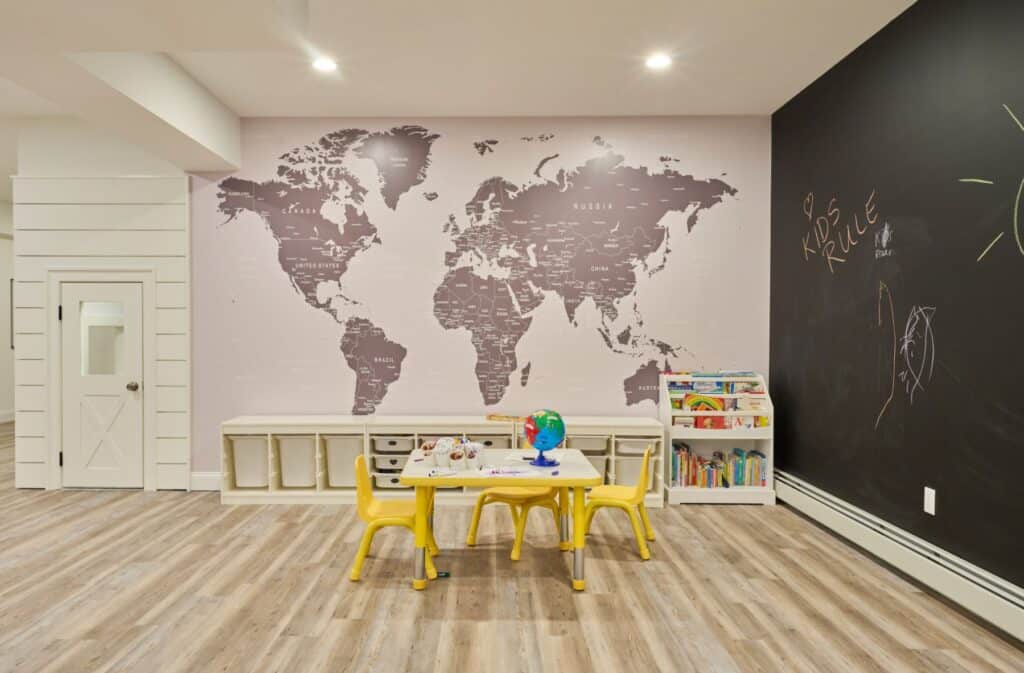
She and Keels both recommend a caddy of some sort for children to hold their tools for completing assignments. That may be pencils, erasers, markers and crayons, scissors and glue as well as a notebook or drawing paper. “I’m a firm believer in having a lot of different types of writing, painting and drawing elements for kids 18 months and up,” says Bowen-Poole.
She also feels it’s important for young children to have their own dedicated workspace in a setting near their parents. “They should have a desk or table somewhere where they can leave things out if they need to and keep coming back to it,” says Bowen-Poole. “But also have mom or dad nearby to ask questions. Most young kids don’t want to be by themselves.”
First through Fifth Grade
Children in this age group start to become more independent as they do homework and parents should encourage that. “Parents should be checking for comprehension but not necessarily checking to see if something is right or wrong,” advises Keels. “If it’s wrong, that’s the perfect chance for the teacher to see what the student is struggling with when they return the next school day.” This is when a table or desk nearby, but not the kitchen table, becomes even more critical. “When kids are able to find what they need and do everything on their own, that’s the ultimate goal,” says Bowen-Poole. “We use those same principles of effective classroom management in our designs for homes.”
Even though they are independent readers, Keels says, continue to let children read aloud to you through these elementary years and into fifth grade. This may not happen in the after-school hours. Start the bedtime routine 30 minutes early and do reading at the end of the day if that works best, or read during breakfast on the weekends if sports monopolize your schedule. “It might not be sustainable to do every day but read a bit longer on the days you can to compensate for those days you are not able to do it,” says Keel. “Speaking from my own perspective as a father, sometimes you have to get creative.”
Middle and High School
Organization is key as students get older and begin juggling more than one class and teacher. Switch to a desk with a dry erase board for reminders, file folders for sorting papers for each class, and a place for that caddy with all the pencils and pens they need. Now that students are older, that work space could be upstairs or in a quieter location.
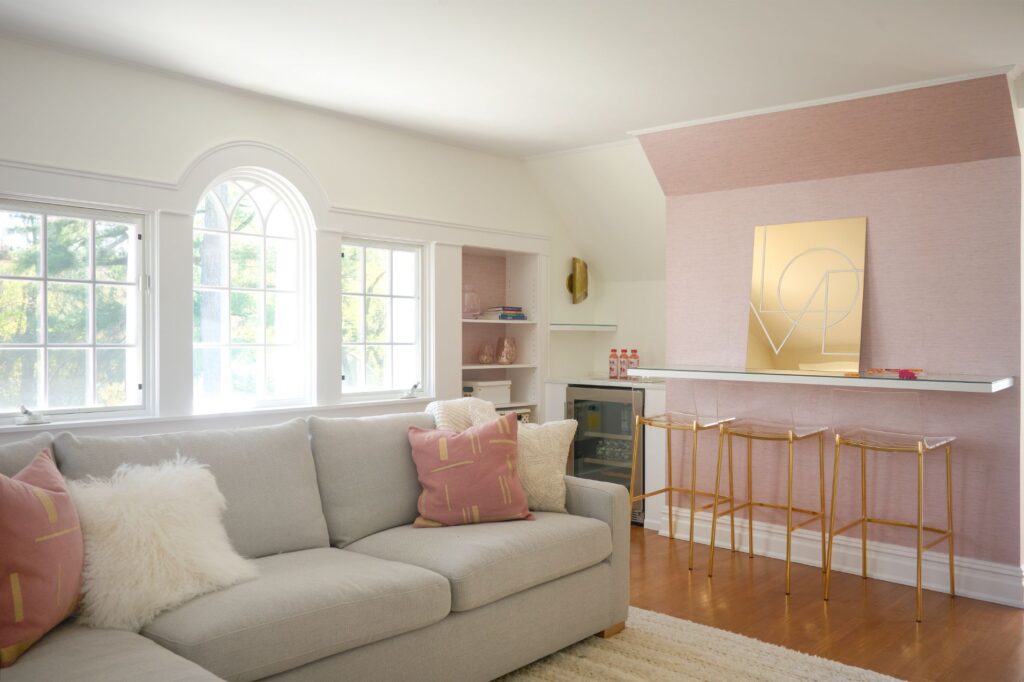
“If they have a desk that is set up in their room, they may still not do homework up there all the time if they need your help quizzing them on vocabulary words, but they know where everything is and if there is a test or a long-term assignment they can keep it in one place,” Bowen-Poole says.
Shared Space
Can children of different ages share a workspace? Experts say, “Yes!” Bowen-Poole has designed homework areas with a communal table where kids can work together. She said sometimes, seeing the older children setting an example is good for young students. “If it works for your family, I think it depends on your children and their demeanors,” says Bowen-Poole. She works with parents to come up with a plan that is customized to their needs. “It’s good for younger kids to see what older kids are doing and see what’s required of them. I think older kids will end up leaving the social scene when they need to if they have a test to study for or something.”
Inspired Design
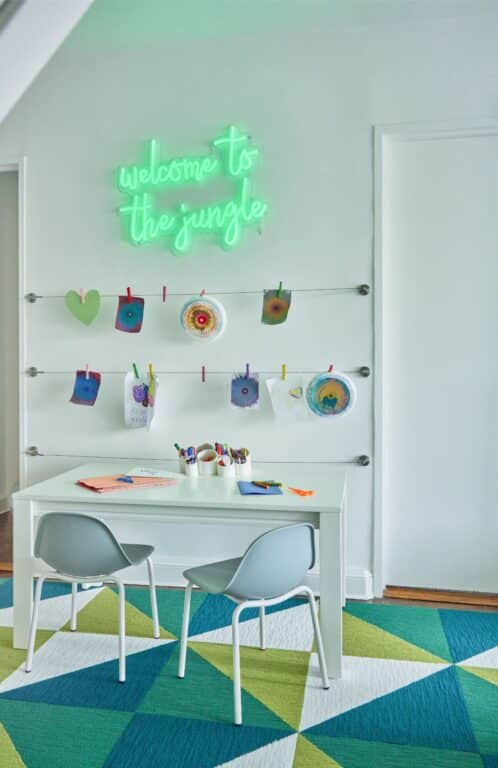
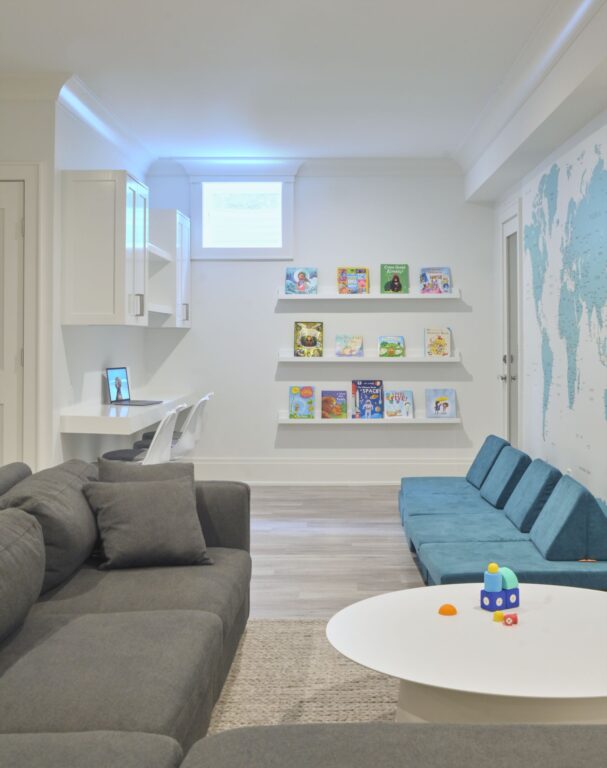
Bowen-Poole says parents want to design a space that fits with their home’s aesthetic but it’s empowering for kids to let them have a choice in a few of the details and in the end, that makes it a desirable place in which kids can work. “They can personalize things that aren’t permanent like the file folders or the chair color,” says Bowen-Poole. “They can pick the art caddy or storage bins or a fabric message board.”
A Few Basics
No matter what your designed space looks like, the three key necessities are a table, a proper chair and writing or project materials close at hand, says Meaghan Mallin, head of early childhood and lower school at New Canaan Country School in New Canaan, CT. “You want an area that is well-lit, that is free of clutter and as much as possible in a quiet area.” Another tool she loves is a Time Timer. A timer that counts down the minutes that enables the child to watch time passing can help children build time management skills. “Both Time Timers and visual checklists help children develop effective work habits, as well as autonomy and ownership of their work,” says Mallin. “Calendars are also effective tools for students to build executive functioning and study skills.”
Routine is Best
Most importantly, no matter what age your kids are, establishing routine is critical to success.
“The goal is to give our children tools to enable them to be accountable for their homework and to develop good work habits,” says Mallin. Though the amount of support a child needs for homework varies for each child, Mallin advises parents to take themselves out of the homework equation as much as possible. She said even for the youngest children, the mantra they teach is that “homework is not done until they put it in their backpack for the next day.”
No matter where they work, experts agree helping children to develop habits of responsibility for their own work and materials at an early age sets the stage for long-term success.
All images: spaces designed by Smart Playrooms, photographed by Jane Beiles.

